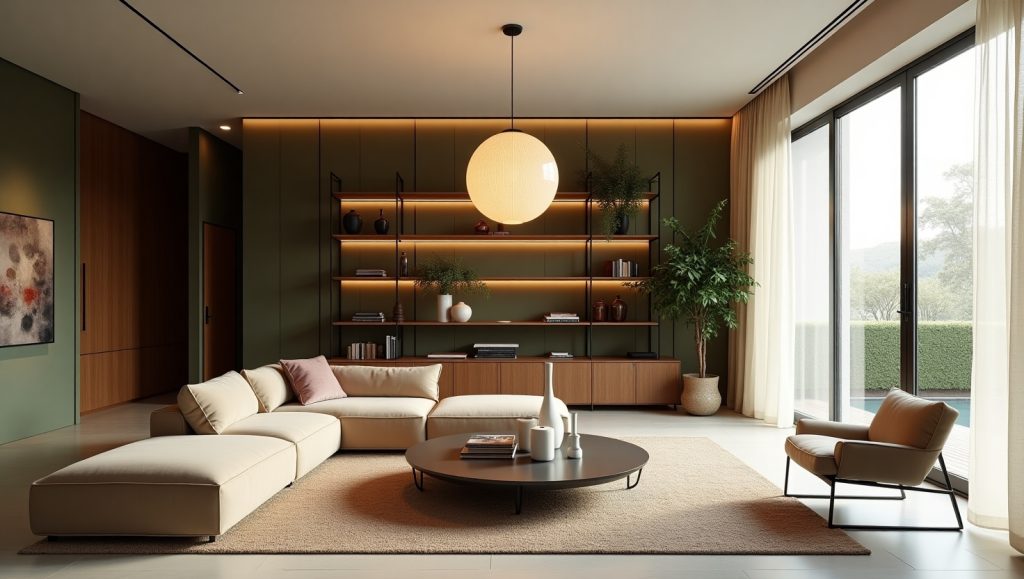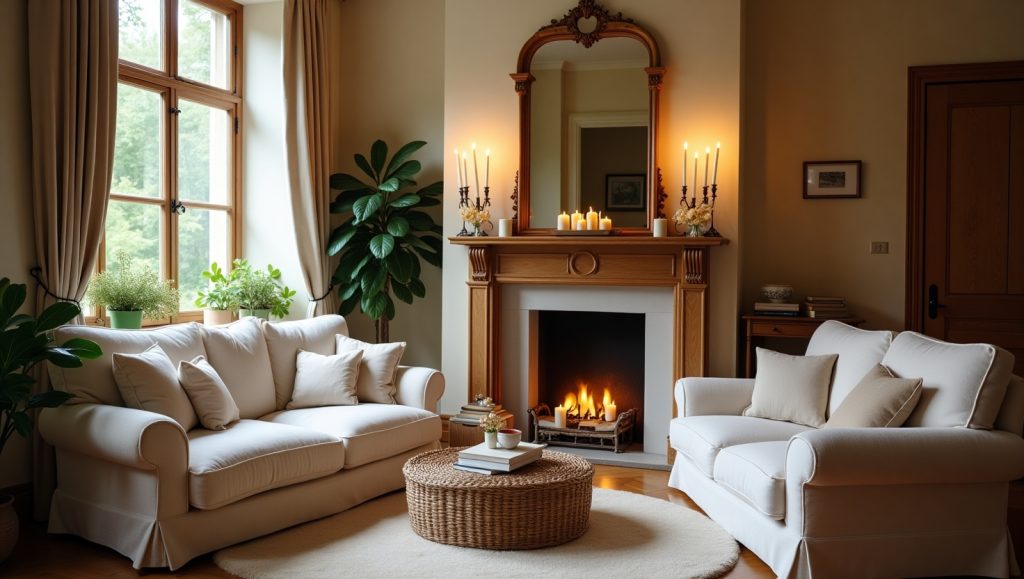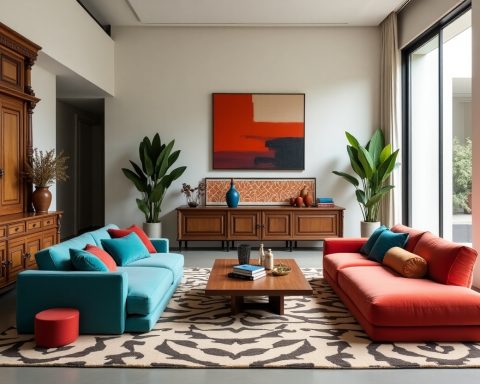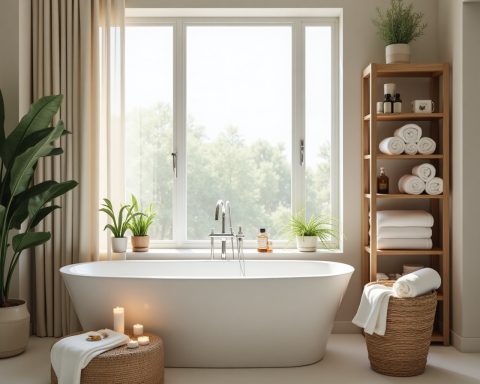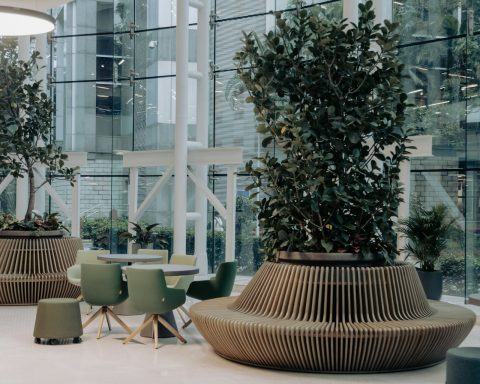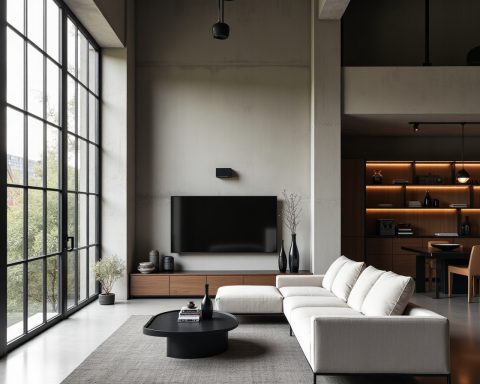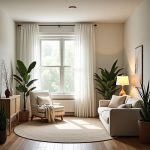Mixing patterns in interior design can feel like navigating a stylish tightrope walk. When done well, it injects personality, depth, and a vibrant energy into a space, transforming it from bland to bold and uniquely yours. However, the fear of clashing or creating a visually chaotic environment often holds people back. The secret to successful pattern mixing lies in understanding a few key principles and approaching the process with a confident, yet considered, eye. This guide will demystify the art of pattern play, equipping you with the knowledge and techniques to layer textures and designs like a seasoned professional, resulting in interiors that are both visually exciting and harmoniously cohesive.
Here’s how to mix patterns like a pro in interior design:
1. Start with a Dominant Pattern: The Foundation of Your Mix
- The Anchor: Choose one pattern that you absolutely love and let it be the foundational anchor for your entire pattern mix. This dominant pattern will often be the boldest in terms of color, scale, or visual complexity, setting the overall tone for your patterned elements.
- Strategic Placement: Carefully consider where this anchor pattern will reside within the room. Prime locations include a large area rug that grounds the seating arrangement, a statement-making wallpaper that defines a focal wall, or a prominent piece of furniture like a sofa or armchair that commands attention.
2. Introduce Patterns of Different Scales: Creating Visual Rhythm
- Variety is Key to Visual Interest: Avoid the pitfall of using patterns that are all the same size, as this can lead to a flat and uninspired look. Instead, aim for a deliberate mix of large, medium, and small-scale patterns to generate visual interest and prevent the space from feeling either overwhelming or monotonously uniform.
- Contrast and Harmony in Scale: Skillfully pair your dominant large-scale pattern with smaller, more intricate designs. For instance, a bold, oversized floral print adorning a sofa can be beautifully and harmoniously complemented by a smaller, more tightly woven geometric pattern featured on accompanying throw pillows.
3. Play with Different Types of Patterns: Adding Depth and Intrigue
- Expand Beyond the Familiar: Venture beyond the conventional choices of florals and stripes to explore a diverse and captivating range of pattern categories, adding layers of visual intrigue and personality to your design. Consider incorporating:
- Geometric Patterns: Crisp stripes, dynamic chevrons, playful polka dots, sophisticated trellis designs.
- Organic Patterns: Flowing florals, lush botanicals, captivating animal prints, globally inspired ikat designs.
- Abstract Patterns: Expressive painterly strokes,自由form shapes that evoke artistic flair.
- Traditional Patterns: Timeless toile, elegant damask, intricate paisley motifs.
- Balance the Pattern Personalities: Strive for a thoughtful balance between different pattern types to create a dynamic yet harmonious overall feel. For example, the sharp lines of a bold geometric pattern can be effectively softened by the more fluid lines of a delicate floral print.
4. Establish a Consistent Color Palette: The Unifying Force
- The Essential Unifying Thread: Color serves as the most crucial element in ensuring that seemingly disparate patterns work together in a cohesive and visually pleasing manner. Select a unifying color palette of approximately 2 to 4 main colors and strategically ensure that all the patterns you choose incorporate these core hues to some discernible degree, creating a visual link between them.
- Embrace Variations in Tone: Don’t shy away from utilizing different shades, tints, and saturations of your chosen colors within the various patterns. This subtle variation adds depth, visual nuance, and a more sophisticated layered effect to your pattern mix.
5. Consider the “Rule of Three” (or More): Building Visual Complexity
- Achieving Visual Balance and Intent: Employing at least three distinct patterns is a widely recommended guideline for creating a layered and intentionally designed look. This principle helps to prevent the space from appearing too overly coordinated or, conversely, unintentionally mismatched.
- Gradually Building Complexity: While starting with three patterns provides a solid and manageable foundation, don’t feel limited. As your confidence and understanding of pattern mixing grow, you can certainly incorporate a greater number of patterns to achieve a more complex and richly textured interior.
6. Treat Neutrals as Patterns: Subtle Visual Texture
- The Quiet Sophistication of Texture: Don’t underestimate the significant role that textured solid fabrics and materials, such as the natural weave of linen, the subtle complexity of tweed, or the organic feel of woven baskets, can play in your pattern mix. These textured elements can act as sophisticated neutral “patterns,” providing essential visual relief and allowing bolder, more prominent patterns to truly shine without overwhelming the overall visual balance.
- Grounding with Neutral Patterns: Strategically utilize neutral patterns on larger, anchoring pieces of furniture, such as a subtly textured linen sofa or neutral-toned curtains. These grounded elements provide visual stability and allow more vibrant and dynamic patterned accents to take center stage.
7. Vary the Density of Patterns: Creating Visual Breathing Room
- Balancing Visual Busyness: Skillfully mix patterns with varying degrees of visual busyness or density. A highly intricate and detailed pattern can be effectively balanced by a more open and simpler design that offers visual breathing room and prevents the eye from feeling overwhelmed.
- Strategic Density Placement: Consider reserving denser, more visually complex patterns for smaller doses or on accent pieces, such as throw pillows or small decorative items. Conversely, utilize less dense and more open patterns for larger surfaces like rugs or upholstery.
8. Pay Attention to Scale and Proportion: Harmonious Relationships
- The Interplay Between Patterns: The visual relationship between the sizes or scales of your chosen patterns is absolutely critical for a successful mix. Ensure that there is sufficient variation in scale so that each individual pattern remains clearly discernible and does not visually compete or clash with the others.
- Matching Pattern to Surface Size: The scale of the pattern should also be thoughtfully appropriate for the specific size of the object or surface it adorns. For example, an oversized, sprawling floral print might visually overwhelm a small throw pillow, while a tiny geometric might get lost on a large area rug.
9. Create Visual Triangles: Guiding the Eye Intentionally
- Establishing Visual Flow: Strategically distribute your chosen patterns throughout the room in a roughly triangular fashion. This design technique creates a deliberate visual flow, guiding the viewer’s eye around the space in a balanced and intentional manner, rather than appearing randomly scattered.
- Building Cohesion Through Repetition: Enhance the sense of connection and overall cohesion within your pattern mix by repeating a particular pattern in different areas of the room. To add visual interest, vary the scale or application of the repeated pattern in its different placements.
10. Trust Your Eye and Embrace Experimentation: The Art of Visual Harmony
- The Ultimate Arbiter of Visual Harmony: Ultimately, the true success of pattern mixing is subjective and comes down to what visually resonates with you and creates a sense of harmony and aesthetic pleasure in your own eye. Trust your personal instincts and don’t be afraid to experiment with different combinations of patterns until you achieve a look that feels both exciting and balanced.
- The Importance of Testing: Before making any permanent commitments, gather physical samples of your chosen fabrics, wallpapers, and other patterned elements and carefully observe how they interact with each other within the specific lighting conditions of your space. Creating digital mood boards can also be an invaluable tool for visualizing different pattern combinations before implementation.
11. Start Small and Gradually Build Confidence: Layering Your Way to Mastery
- A Gentle Introduction to Pattern Play: If you are relatively new to the art of pattern mixing, begin with a more conservative approach by incorporating just two distinct patterns into your design. As you become more comfortable and develop a keener eye for successful combinations, gradually introduce additional patterns to build complexity and visual richness.
- Experiment with Accent Pieces First: Before committing to larger and more permanent patterned elements like sofas or curtains, experiment with patterns on smaller, less impactful items such as throw pillows, decorative cushions, or small area rugs. This allows you to test out different combinations and gain confidence without a significant commitment.
12. Consider the Overall Style of Your Space: Pattern Personalities
- Aligning Patterns with Design Aesthetics: Recognize that different categories of patterns often lend themselves more readily to specific interior design styles. For instance, bold geometric patterns frequently feel inherently modern and contemporary, while classic floral motifs can evoke a more traditional or bohemian vibe. Ensure that your pattern choices are thoughtfully aligned with the overarching aesthetic you are striving to achieve in your space.
13. Avoid Overdoing It: The Importance of Visual Rest
- Preventing Sensory Overload: While the skillful mixing of patterns can be visually exciting and dynamic, it is crucial to avoid overwhelming the eye with an excessive number of competing designs. If a space begins to feel visually chaotic, overly busy, or jarring, it is a strong indication that you may have incorporated too many patterns or that the scales and colors are clashing rather than harmonizing.
- Creating Essential Visual Resting Points: Strategically incorporate sufficient areas of solid, neutral colors and textures throughout the room. These calmer, un-patterned areas provide essential visual resting points, allowing the eye to relax and preventing the patterns from feeling overwhelming or visually fatiguing.
14. Think About Texture as a Subtle Pattern: Adding Dimensionality
- Introducing Depth Without Bold Designs: Don’t overlook the power of incorporating textured fabrics and materials, such as chunky knit throws, intricately woven baskets, or subtly textured wallpaper. These tactile elements can introduce significant visual interest and depth to your design without introducing a distinct or competing pattern, helping to create a more layered and balanced overall look alongside bolder patterned elements.
15. Use Pattern to Define Distinct Zones: Visual Separation in Open Spaces
- Creating Visual Boundaries: In open-plan living spaces where different functional areas flow seamlessly into one another, you can effectively utilize different patterns on elements like area rugs or upholstery to visually define and delineate these distinct zones. For example, a bold geometric patterned rug could anchor the living area, while a different, perhaps more subtly patterned, fabric could adorn the dining chairs, creating visual separation and a sense of intentional space planning.
16. Break the Rules Intentionally: Embracing Confident Individuality
- The Art of Deliberate Deviation: Once you have developed a solid understanding of the fundamental principles of successful pattern mixing, don’t be afraid to intentionally deviate from these guidelines if it aligns authentically with your personal style and ultimately creates a look that you absolutely love. However, it is crucial to distinguish between confident and deliberate rule-breaking, which often yields visually interesting results, and accidental clashing, which can lead to a less harmonious outcome.
By diligently following these comprehensive guidelines, thoughtfully considering the interplay of scale, color, and pattern type, and ultimately trusting your own unique aesthetic sensibilities, you can confidently navigate the exciting world of pattern mixing and create interior spaces that are not only visually captivating and full of personality but also harmonious, comfortable, and a true reflection of your individual style. Remember that the ultimate goal is to craft a home that feels both visually exciting and deeply comfortable, making it a truly unique and welcoming sanctuary.

